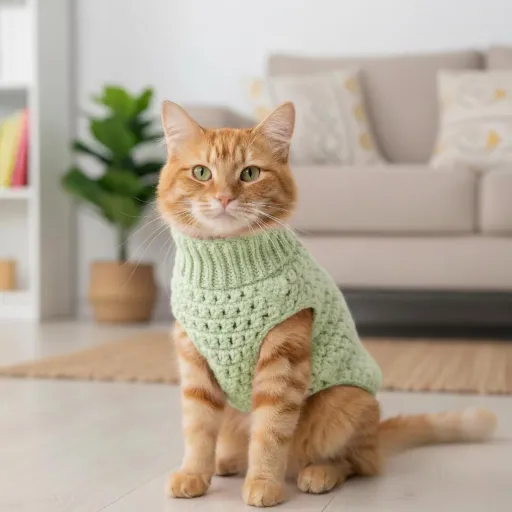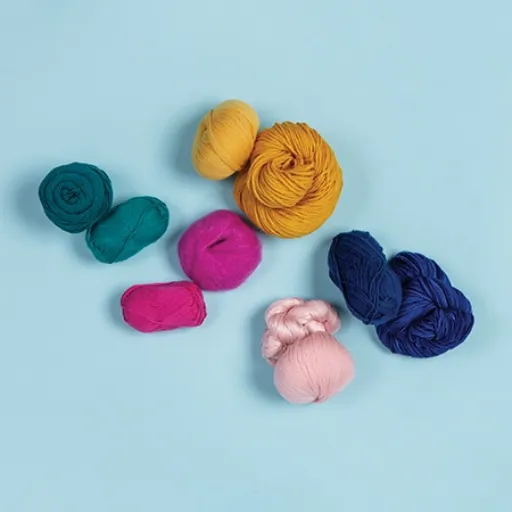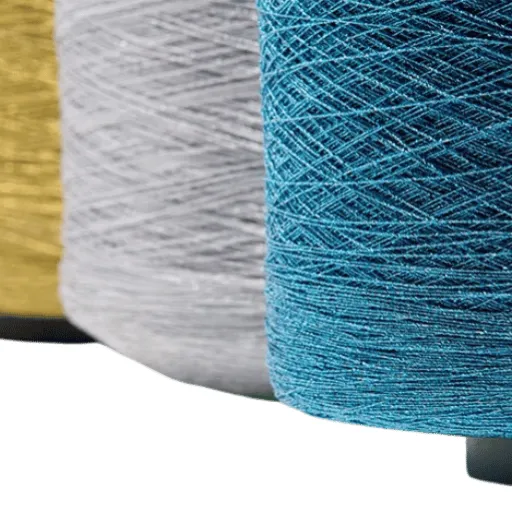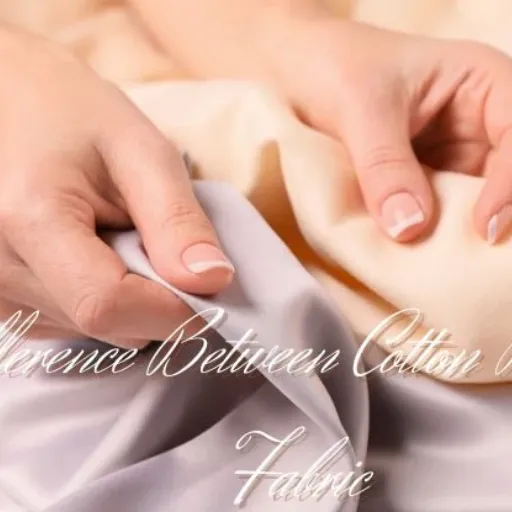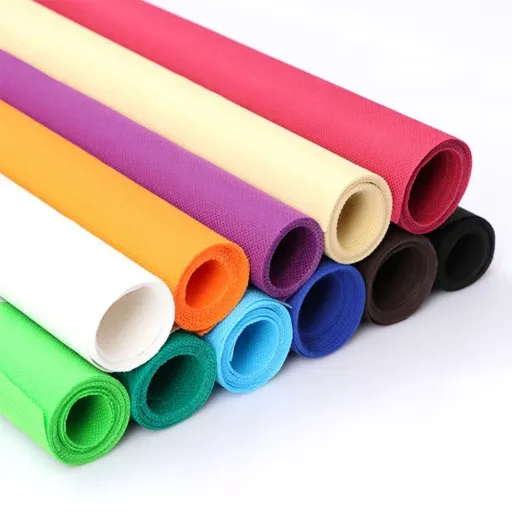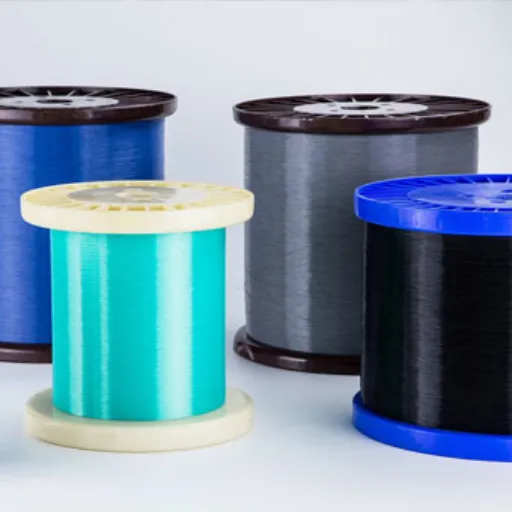The question in this context will be: should one go with cotton or polyester? Be it for apparel-making, home textiles, or in any other thin line of material, setting the key differences between these two fabrics should be considered. The blog post will take you through a comprehensive cotton-polyester comparison featuring their stand-out properties—which include pros and cons. From how comfortable they are, how long-lasting they are, through environmental aspects, and how to give them care, you have it all to assist you in choosing. Let’s prepare to unravel the enigmatic nature of these two popular fabrics and see which one will fit best for you!
Understanding Polyester and Cotton
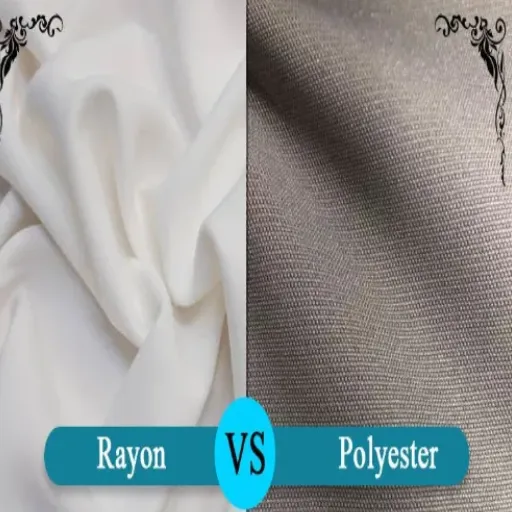
Composition of Polyester and Cotton Fibers
🧪 Polyester
Being a completely synthetic fabric, polyester is derived from petroleum products. The fibers are formed from a chemical process of polymerizing ethylene glycol and terephthalic acid to form polyethylene terephthalate (PET), a very tough, durable, and versatile material. Polyester is said to be one of the strongest fibers and is wrinkle-resistant and resilient to fading. With so many applications, including clothing, upholstery, and industrial use, this fabric is quite popular.
🌱 Cotton
Cotton is a natural fiber, extracted from the seed hair of the cotton plant. The fiber mostly consists of cellulose, a carbohydrate polymer, which lends it softness and breathability. Cotton, with such properties of being soft and comfortable, absorbs moisture readily from the skin, and is nonallergic, is useful for making articles of clothing and bed linens and towels. On the downside, pure cotton wrinkles easily and shrinks upon washing.
💡 Key Insight: Polyester fabric is known for durability and ease of care, whereas cotton is preferred for that natural feel and comfort. One needs to consider the details about these two fibers to be able to judge what fits into his concept more: longevity or softness and a natural touch.
Fabric Characteristics Breakdown
The Characteristics of Polyester Fabric
Polyester fabric has a vendibility for strength, versatility, and resilience. It is a synthetic fiber created from petroleum products through a chemical process, rendering a fiber that is durable and resistant to stretch or shrinkage. Polyester is characterized by its excellent shape retention and hence is used in garments and home textiles requiring constant form and appearance.
✅ Key Advantages:
- 🌊 Waterproof properties: Draws minimal water, dries quickly, resists stains
- 👔 Wrinkle resistance: Maintains appearance with minimal care
- 🎨 Color retention: Brilliant colors even after multiple washes
❌ Potential Drawbacks:
- 🌡️ Heat retention: Less breathable, may feel uncomfortable in summer
- ⚡ Static electricity: Can cling to skin depending on weave
Exploring Cotton Fabric Properties
With its natural origin and good breathability, cotton fabric is very comfortable. In reality, its beauty lies in the softness of the fabric and its ability to keep the body cool when the climate is warm. The fabric is breathable, thus allowing the free flow of air so that the heat is not trapped, enforcing more comfort onto the wearer.
✅ Key Advantages:
- 💨 Excellent breathability: Allows free airflow, keeps body cool
- 💧 High absorbency: Can absorb 27 times its weight in water
- 🎨 Dye absorption: Excellent color variety and design options
- ♻️ Eco-friendly: Biodegradable and sustainable choice
Polyester vs Cotton: A Detailed Comparison

| Comparison Factor | Cotton | Polyester |
|---|---|---|
| 🏋️ Durability | Moderate – prone to shrinking and wear | Excellent – highly resistant to wear |
| 💨 Breathability | Excellent – natural airflow | Limited – traps heat and moisture |
| 🏃 Moisture Management | Absorbs moisture but slow to dry | Excellent wicking and quick dry |
| 🌱 Environmental Impact | Biodegradable and renewable | Petroleum-based, non-biodegradable |
| 🧺 Care Requirements | Requires careful washing to prevent shrinkage | Easy care, machine washable |
Durability and Longevity Analysis
The textile industry establishes that polyester prevails over cotton in several respects when it comes to durability and longevity. Polyester is synthetically developed-from polymer fibers-with excellent resistance to abrasive forces. It shrinks less, stretches less, and wrinkles less than cotton, and it stands up well to repeated washing. Thus, polyester is largely favored in situations that are harsh and demanding on the wearer.
In contrast, cotton, the natural fiber, is soft and breathable but generally less durable than polyester. Cotton fabrics are often injured because of constant abrasion, shrinking through washing, and wear and tear as they grow older. Many cotton blends, however, would exist where cotton is allied with synthetic fibers to enhance durability and not to lose the comfort of cotton.
Bottom Line: Polyester bestows upon textiles strength and longevity; meanwhile, consideration is given to cotton even though its lifespan is short because it has comfort and biodegradability attributes, being thus the more sustainable option.
Breathability and Comfort Assessment
🌿 Cotton for Comfort
When breathable properties are considered in terms of comfort, cotton has more helping factors. It is a natural fiber that allows air to flow through it, thus great for weather in hot temperatures. The soft texture of cotton with a bit of weight ensures that it stays smooth against one’s skin, preventing any irritation that may cause discomfort for longer wear. Hence, cotton is perfect in its offerings in casual clothing and activities wherein ease and comfort are the main criteria.
🏃 Polyester for Performance
Polyester, meanwhile, being a synthetic fiber, is relatively less breathable as compared to cotton and tends to trap heat and moisture, causing discomfort during very hot or humid conditions. If treated properly or blended with other materials, it may exhibit superior moisture-wicking properties, especially useful in sport or sweat-intensive areas. On the other hand, polyester may not be soft like cotton to some extent, which may contribute to comfort issues for various people.
Moisture-Wicking Features of Polyester Fabric
Polyester is undoubtedly the best moisture-wicking fabric, making it the most sought-after activewear and performance garment fabric. The term moisture-wicking describes the property that pushes sweat away from the skin to the outer surface of the fabric for rapid evaporation. Such an activity keeps the skin dry and comfortable during excursions.
🔬 Science Behind Moisture-Wicking:
The synthetic fiber composition of polyester and the hydrophobic nature of this fiber prevent water from being absorbed, hence enhancing its moisture-wicking properties. Unlike natural fibers, such as cotton, polyester has very little ability to hold moisture within the structure, thereby allowing fast drying. In addition, some of the newer manufacturing techniques further enhance this characteristic by use of special weaves or treatments to increase the efficiency of sweat management.
The Benefits of Blended Fabrics: Cotton and Polyester
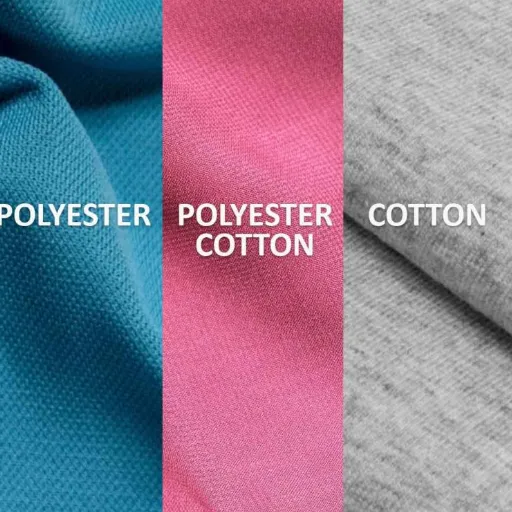
Advantages of Polyester Cotton Blends
Polyester cotton blends combine the properties of both the fibers: the comfort of cotton and the strength of polyester. Cotton brings softness and a breathable nature to the fabric, while polyester equips it with strength and resistance to staying in shape out of wear and tear. These qualities offer flexibility in use, whereby the blends are good for workwear and casual wear.
🎯 Key Benefits of Blends:
- Moisture Management: Polyester wicks moisture while cotton provides breathability for optimal comfort
- Enhanced Durability: Resistance to shrinking, wrinkling, and fading for longer garment life
- Easy Maintenance: Quick washing and drying with minimal special care requirements
- Cost-Effectiveness: Lower production costs with balanced performance characteristics
Cost-Effectiveness of Blended Fabrics
The blended fabrics have excellent cost-effectiveness owing to their long life and low maintenance. The blending of durable fibers such as polyester and cotton provides for the sustainability of the fabrics, thereby reducing their replacements and bringing more savings to the consumer. On the other hand, resistance against shrinking, wrinkling, and fading ensures that the clothes remain good-looking for long, giving consumers maximum value for their money.
After giving some thought, I find that blend fabrics are easy to keep up with and do save a lot of time and money. The fabrics do not need any special treatments and can be washed and dried very quickly, thus saving electricity and the extra money for any professional cleaning. In the long run, this very easy care of fabric does contribute majorly toward saving in any home or business, rendering the blended fabric a really economical option.
💰 Economic Benefits: Another concerning aspect that demonstrates their economically viable nature is price. In idea, the cost of production for any of these fabrics is less than any pure natural fibers; therefore, there remains a chance for a cheaper price for buyers.
Versatility in Fashion and Home Textiles
Blended fabrics have turned into nature’s multifarious fabrics, thus being an essential part of the textile industry for fashion and home. They provide blending characteristics such as strength versus weathering, breathability, or stretchability. Hence, there is a realm of possibilities given to the designer to create garments that fall well within their aesthetics while also wearing for everyday life with styles, climates, and preferences different from sarees to jeans.
Likewise, when it comes to home textiles, blended-type materials boast superiority. In short, such hybrids are believed to offer drapes, upholstery, linens, and even table covers that are just comfortable and durable enough. Blended fabrics are favored domestically, as well as by hotels, wherever retardation of stains and wrinkle resistance are considered a priority, unlike in most single-fiber materials. They offer an extensive assortment of textures and finishes that allow the customer to pick with regard to décor and lifestyle.
🎨 Design Versatility: Because blended fabrics make an affordable option, they become an attractive proposition for both industries. It guarantees that these fabrics shall be able to produce extraordinary, yet cheap products-that is, bridging the gap between luxury and practicality.
Common Applications of Cotton and Polyester Fabrics
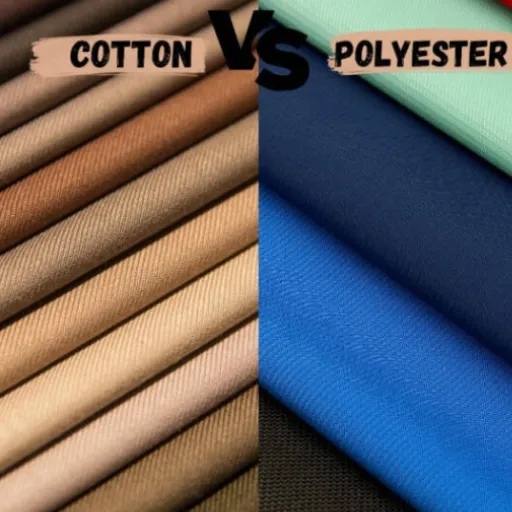
Everyday Apparel: Choosing Cotton or Polyester
👕 Choose Cotton When:
- ☀️ Hot weather comfort is priority
- 🏠 Casual, everyday wear
- 👶 Sensitive skin considerations
- 🌱 Environmental consciousness matters
🏃 Choose Polyester When:
- 🏋️ Durability is essential
- 🧺 Easy care is preferred
- 💦 Moisture-wicking needed
- 💼 Professional appearance required
Smart Choice: It depends on what-your-priorities are! If top-notch comfort and breathability alongside that natural feel are the imperative qualities, then cotton will never go amiss. On the other hand, should longevity, ease of maintenance, and performance stand above all else, then polyester is the way to go. Most garments available in the present-century combine both cotton and polyester to benefit from the advantages of both, and hence compromise between comfort-based and practically-oriented everyday wear.
Performance Clothing: When to Choose Polyester
Polyester is the perfect choice for performance clothing in situations where durability, moisture, and lightness are other keywords in the dictionary. This synthetic fiber was treated to withstand heavy use that comes with activities such as running, cycling, or gym workouts. Polyester also keeps wetness away from a person’s skin so that the wearer may remain dry and comfortable during the highest-intensity exercise.
🏆 Performance Advantages:
- Shape retention and wrinkle resistance – maintains appearance through continuous wear
- Fast drying properties – ideal for high-intensity activities
- Blendability with spandex – provides flexibility without restricting movement
- Durability under stress – perfect for athletes and manual laborers
Home Textiles: The Role of Blended Fabrics
Blended fabrics play an important role in home textiles, as they emphasize the best of properties from different fibers to provide a material that is versatile and functional. On mixing natural fibers, like cotton or wool, with synthetics such as polyester or nylon, manufacturers can then balance the fabric in terms of softness, sturdiness, and affordability. For normal household usage, therefore, blended fabrics serve as an apt choice-namely for examples of bed sheets, curtains, and upholsteries.
🏠 Home Textile Applications:
These fabrics are appreciated for the aesthetic versatility and adaptability that blended fabrics offer. The texture, design, and color of blended fabrics may be different, and this allows them to align with interior styles ranging from modern to traditional. With blended fabrics ranging from elegant finishes to practical options such as stain resistance, they satisfy all possible practical solutions for the modern household, which establishes them as a major element in the dimension of home textiles.
Drawbacks of Cotton and Polyester Fabrics

Environmental Impact of Polyester Production
🌍 Environmental Concerns:
Being a geological-originated fossil fuel dependency polymer, the environmental impacts of polyester production are numerous. Polyester is a synthetic fiber made up from petroleum products, and its manufacture involves excessive energy consumption. Make extraction and processes on petroleum lead to outputs of large quantities of greenhouse gases, inducing global warming. Hence, this teaching generation of by-product might contain toxic substances or resort to pollution if not carefully disposed of.
🌊 Microplastic Pollution:
One other point is the environmental persistence of polyester. Being non-biodegradable, polyester can stay in ecosystems for hundreds of years, causing long-term pollution. By washing, polyester wear releases microplastics that flow down the drainage and eventually land in the ocean, i.e., maritime pollution, which kills marine life and may disrupt the marine food chain. In this respect, microplastic pollution has been increasingly recognized as a grave issue of environmental concern at the global scale.
♻️ Recycling Efforts:
Polyester recycling was meant to reduce those effects on the environment by producing recycled polyester, which lessens the use of virgin petroleum and wastes. However, recycling processes themselves also consume energy; and, being limited in recycling capability, are not a real alternative because of fiber quality degradation on occasion. Hence, more work on fabric alternatives, better production technologies, and making consumers aware of sustainable choices will go a long way toward solving the environmental impacts of polyester.
Comfort Concerns with Polyester Fabrics
From durability to affordability, the polyester fabrics stand in their own right; still, comfort-wise, they pose some problems due to their synthetic nature. Maybe one of the more common complaints is how polyester-product designs tend to cling to heat and moisture on the skin. Let’s say if it were cotton and therefore highly breathable, the experience would of course be totally different. Polyester presents some discomfort during warm or humid weather due mostly to it doing little to allow sweat to evaporate.
⚠️ Common Comfort Issues:
- Skin Irritation: Synthetic fibers may cause chafing or itchiness, especially for sensitive skin
- Heat Retention: Poor breathability can cause overheating
- Odor Retention: Non-absorbent nature can trap unpleasant smells
- Static Buildup: Can create uncomfortable clinging to the body
💡 Solutions: With all these factors in mind, textile technology arose to create breathable kind of polyesters, frequently blended with natural fibers for the sake of comfort; while consumers should be advised to select items with moisture-wicking properties and proper ventilation for improved breathability. Washing and caring for polyester clothes regularly also help reduce odor retention and, therefore, improve the user experience.
Maintenance Challenges of Cotton and Polyester Blends
Maintaining cotton and polyester blends is often tests due to the delineated properties of the two fiber types. Cotton, being natural, will shrink and wrinkle under heat or bad washing practice. Polyester, being synthetic, will resist wrinkling but develop odors and static. These opposing characteristics need attention all through washing and drying to keep up with the fabric quality and usability.
🧺 Proper Care Guidelines:
- Washing: Use cold to lukewarm water on gentle cycle to prevent shrinkage
- Detergent: Choose mild detergents to avoid harsh chemical damage
- Drying: Air dry or tumble dry on low temperatures
- Fabric Softener: Limit use to maintain fiber integrity and moisture-wicking properties
Frequently Asked Questions (FAQ)
Q: In what ways can cotton be differentiated from polyester?
A: The primary difference lies in the nature of their composition. Cotton is a textile derived from a natural fiber; that is, a fiber obtained from the cotton plant, whereas polyester is a synthetic fabric derived from petroleum-based products. Cotton fibers are breathable and comfortable while polyester fibers stand for strength and resistance to creasing.
Q: What are the features of cotton?
A: Cotton is soft, breatheable, and absorbent-the opposite of synthetic. It feels very comfortable against one’s skin, so it’s usually worn in the daily life. Fine-quality cotton resists wear and tear and keeps its shape fairly well, although it shrinks when washed if not pre-shrunk.
Q: Polyester fabric versus cotton fabric: How do they compare?
A: Polyester is durable and resistant to fading when compared to pure cotton. But fewer breathability and softness are factors a polyester fabric cannot go in favor of. A decision will hence be placed depending on what one intends to carry out: cotton for casual wear or polyester for activewear where moisture-wicking properties prevail.
Q: Can polyester fabric cause skin irritation?
A: Some people may suffer from skin irritation when worn in polyester fabric due to the synthetic nature of the material. Polyester also tends to hold heat, which makes it uncomfortable in hot weather. One should consider what he or she is sensitive to when making a choice of polyester or cotton.
Q: What are the disadvantages of polyester?
A: Polyester is a non-breathable material and makes you uncomfortable in hot weather; also, in an unfortunate manner for you, polyester can absorb odors. These fibers also pose a sort of ecological concern as they are less biodegradable than natural cotton fibers, while on the other hand, cotton farming has its own environmental considerations.
Q: How is poly cotton made?
A: Poly cotton is created through mixing cotton and polyester fibers, quite often in varying percentages. The intention is to marry the advantages of both fabrics, turning out to be the lightweight cloth that is soft as cotton but hard as polyester.
Q: What are the common types of cotton used in making fabrics?
A: Different varieties of cotton textile fabric are available, some including normal convention cotton, organic cotton, and the highest quality cotton varieties. Each type is different, with organic cotton preferred for being environmentally friendly and not using synthetic pesticides.
Q: What are the common uses for cotton for consumers?
A: Cotton is generally used in making garments, bed linen, towels, and other household textiles. In terms of consumer applications, cotton finds its way into virtually anything whereby comfort and versatility are sought, while on the other hand, wearing the fabric loose or tight, it would give the user some level of naked feel due to the fact that cotton fabrics are natural and therefore permeable to air; plus, they are easy to wash.
Q: What percentage of cotton is found in a polyester cotton blend?
A: Depending on the wants and wanted characteristics of the end fabric, the percentage of cotton in a polyester cotton blend Nowadays can be different. For such purposes, widely used blends are 50% cotton, 50% polyester; however, contrasts can vary from as low as 20% cotton to as high as 80% cotton, depending on the finishing use and the wanted properties of the fabric.
References
-
Polyester vs Cotton – what’s the difference? – A blog discussing the advantages and disadvantages of both fabrics.
-
Polyester Fabric vs Cotton: Differences & 3 Ways to Tell – Explains the differences and characteristics of polyester and cotton fabrics.
-
The Difference Between Cotton and Polyester – Highlights the unique properties of cotton and polyester.
-
Polyester – Wikipedia – Provides an overview of polyester, including its use in cotton-polyester blends.
-
A guide to polyester, cotton, and blended fabrics – Offers insights into the properties and uses of cotton, polyester, and their blends.








